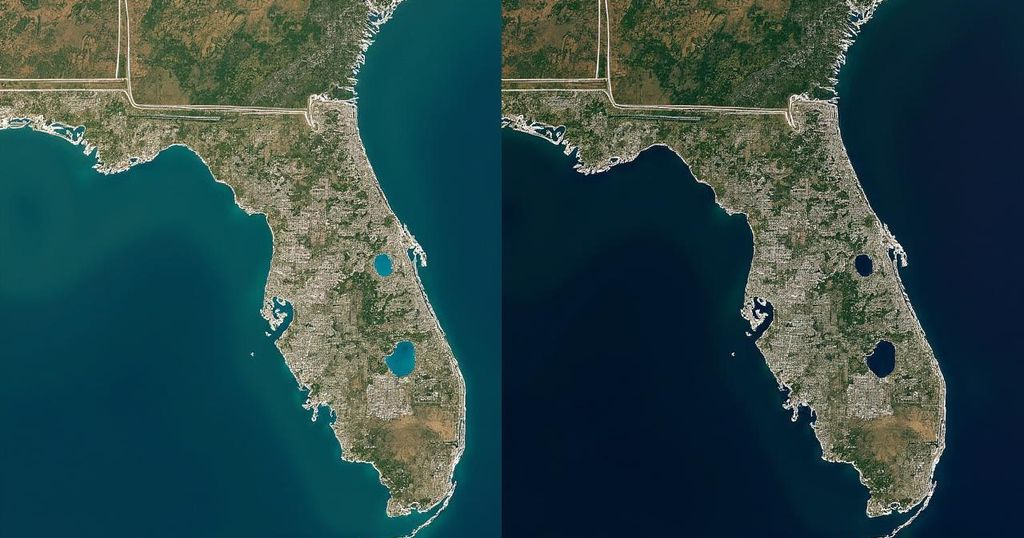Hurricane Helene made landfall in Florida on September 26, causing severe devastation and a confirmed death toll of 214 across several states. North Carolina was notably affected with 108 deaths reported, creating challenges for emergency relief. Aerial and satellite imagery have provided insights into the extent of the destruction.
Hurricane Helene has caused catastrophic impacts across Florida, Georgia, the Carolinas, and Tennessee after making landfall in Florida on September 26. Although it was downgraded to a tropical depression, the storm resulted in countless fatalities, with the confirmed death toll reaching 214. Millions remain without electricity, and damages are projected to be in the billions. As assessed by local officials, North Carolina recorded 108 fatalities, primarily in Buncombe County, which alone accounts for 72 deaths. South Carolina reported 41 deaths, Georgia 33, Florida 19, Tennessee 11, and Virginia two. The destruction experienced in western North Carolina has surpassed anything seen in over a century. To illustrate the severity of the damage, Nearmap has provided aerial photographs, while satellite images from Maxar Technologies further reveal the extent of the devastation caused by Hurricane Helene. In response to the aftermath, community resources are being mapped in Asheville, NC, to assist residents in accessing food, water, and shelter. Furthermore, guidance on effective strategies for cleanup and recovery has been disseminated, particularly regarding flood damage remediation that hampers emergency relief access in affected communities. This hurricane has emphasized the necessity for ongoing preparedness during this year’s hurricane season, as threats to the southeastern United States persist. Maps detailing Hurricane Helene’s extensive 800-mile trajectory of destruction have been released, clarifying the storm’s significant impact across multiple states.
Hurricane Helene made landfall in Florida on September 26, 2023, causing widespread devastation across several southeastern states including Florida, Georgia, the Carolinas, and Tennessee. Though the storm was downgraded to a tropical depression shortly after landfall, its impact continued to be felt severely, as evidenced by the rising death toll and extensive property damage. The storm is particularly notable for its unprecedented effects in western North Carolina, where damage levels have not been observed in over a century. Community assistance and coordination efforts are vital following such disaster events, as they aid in recovery and rebuilding efforts for the affected population.
In summary, Hurricane Helene has resulted in significant human and infrastructural losses across the southeastern United States, particularly impacting North Carolina. With the rising death toll and substantial damage estimates, efforts are underway to support the affected communities. The importance of emergency preparedness remains critical as the hurricane season continues, underscoring the need for vigilance and proactive measures to mitigate future disasters.
Original Source: www.usatoday.com







